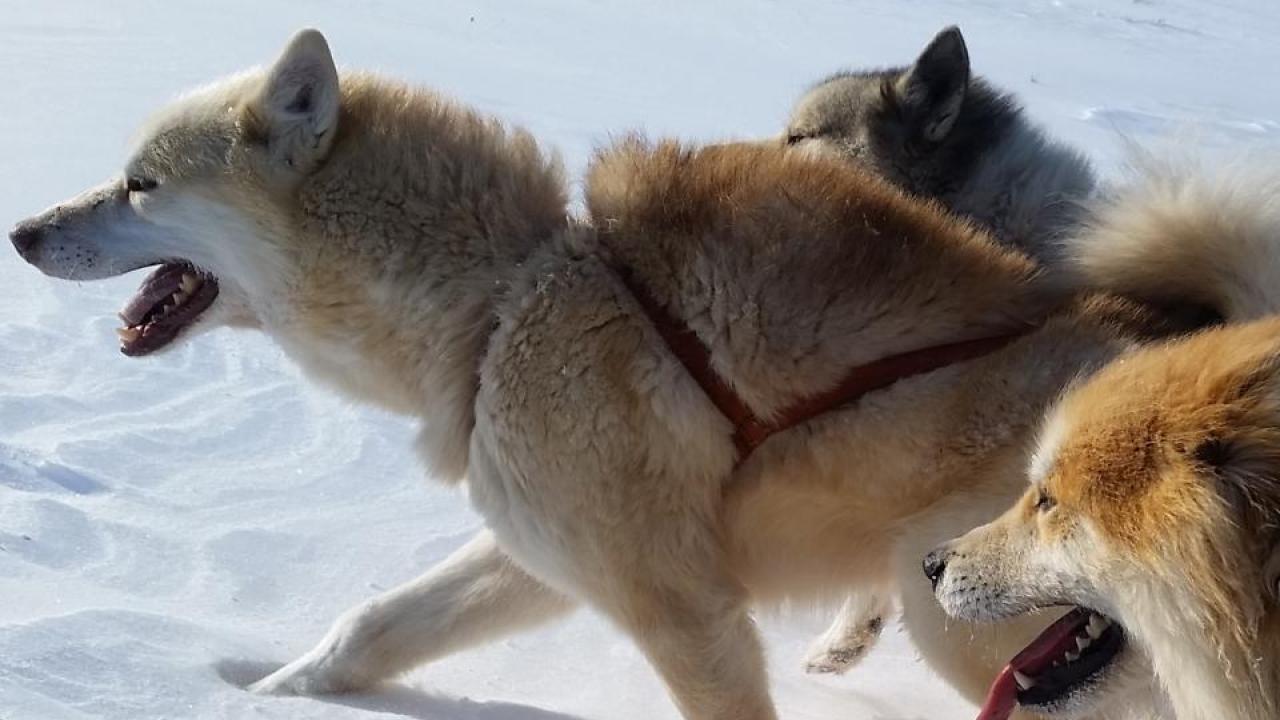
Unique Sled Dogs Helped the Inuit Thrive in the North American Arctic
By Karen Nikos-Rose for UC Davis News
Inuit sled dogs have changed little since people migrated with them to the North American Arctic across the Bering Strait from Siberia, according to researchers who have examined DNA from the dogs from that time span. The legacy of these Inuit dogs survives today in Arctic sled dogs, making them one of the last remaining descendant populations of indigenous, pre-European dog lineages in the Americas.
The latest research is the result of nearly a decade’s work by University of California, Davis, researchers in anthropology and veterinary genetics, who analyzed the DNA of hundreds of dogs’ ancient skeletal remains to determine that the Inuit dog had significantly different DNA than other Arctic dogs, including malamutes and huskies.
The article, “Specialized sledge dogs accompanied the Inuit dispersal across the North American Arctic,” was published Wednesday in the Proceedings of the Royal Society B: Biological Sciences. From UC Davis, authors include Christyann Darwent, professor of anthropology; Ben Sacks, adjunct professor and director of the Mammalian Ecology and Conservation Unit, Veterinary Genetics Laboratory, School of Veterinary Medicine; and Sarah Brown, a postdoctoral researcher. Lead author Carly Ameen is an archaeologist from the University of Exeter; Tatiana Feuerborn is with the Globe Institute in Denmark and Centre for Palaeogenetics in Sweden; and Allowen Evin is at the CNRS, Université de Montpellier, Institut des Sciences de l’Evolution in Montpellier, France. The list of authors includes many others from a large number of collaborating institutions.
